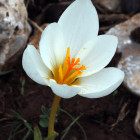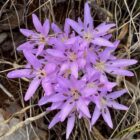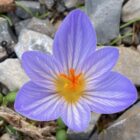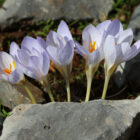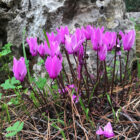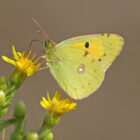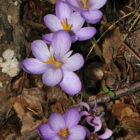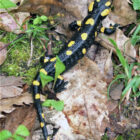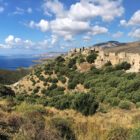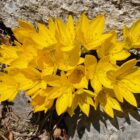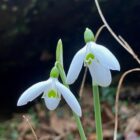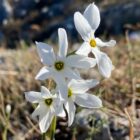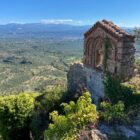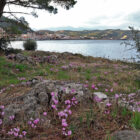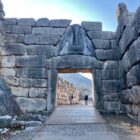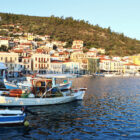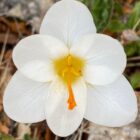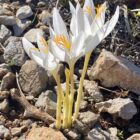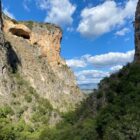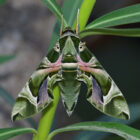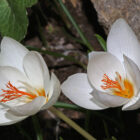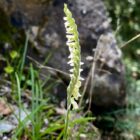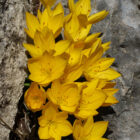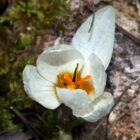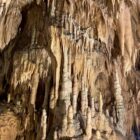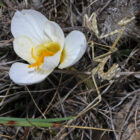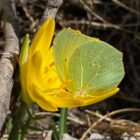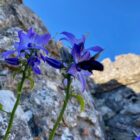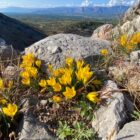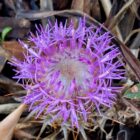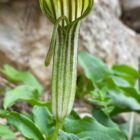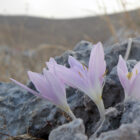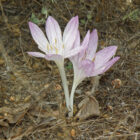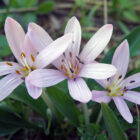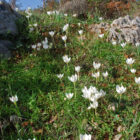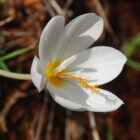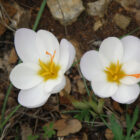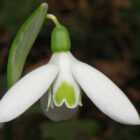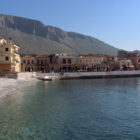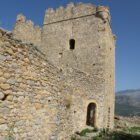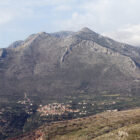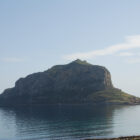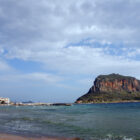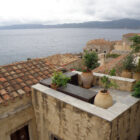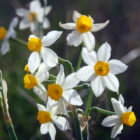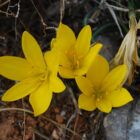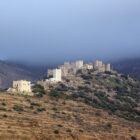Dates & Prices |
BOOK HOLIDAY NOW |
Dates: 21st – 28th October 2024 Confirmed departure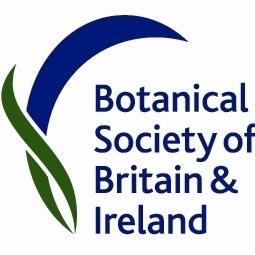
Price: £1,295 Places available
Single Room Supplement: £150
Deposit: £150 per person
Price Includes: All meal, accommodation, ground transport, services of guides & holiday report
Not Included: Flights, travel insurance, entry to archaeological sites, drinks and any other personal items.
Conservation Donation: 10% of profits donated to Botanical Society of Britain & Ireland (BSBI)
Leader: Sotiris Alexiou
Group Size & Travel: Minimum of 3 and a maximum of 6 guests plus 1 leader
Grade: Gentle pace and generally easy walks in a variety of terrains
Holiday Highlights
- Enjoy the rich diversity of autumn flowers that this picturesque part of Greece is rightly famous for!
- Botanical highlights include Colchicums, Cyclamens, Sternbergias, eight species of Crocus, a Galanthus & possibly a Biarum species.
- See Cyclamen, Crocus & Snowdrops in flower at the same time!
- Fantastic flowers such as Crocus boryi, Cyclamen graecum, Galanthus reginae-olgae, Colchicum bivonae, Narcissus serotinus, Crocus goulimyi & more!
- Discover archaeological sites such as the tomb of Atreas
- Marvel at the Byzantine city of Mystras & Mani peninsula
- Magnificent Monemvasia – Greece’s Rock of Gibraltar!
- Stay in the charming seaside town of Gythio. + spend a relaxing evening in Nafplio – one of the most romantic cities in Greece
- Visit some of the most beautiful caves in Europe and step foot at the gates of the Underworld!
Enjoy a week of spectacular autumn flowers in a place where famous antiquity are combined with natural treasures – the rich and varied landscape of the Peloponnese in southern Greece!
Our holiday has been timed to see the best of the Mediterranean autumn wildflowers in some of the best areas in the Peloponnese – Tayetos and Mani.
The Peloponnese has a typical Mediterranean climate with mild, wet winters and hot dry summers. Spring really starts in the autumn with the coming of the rains; the first plants to flower are the many bulbs of the area. Our holiday has been timed to see the best of the Mediterranean autumn wildflowers in some of the best areas in the Peloponnese, Tayetos and Mani. Tayetos, the highest mountain in the Peloponnese, features a fascinating flora. We can expect to explore up to around 1800m to enjoy the range of flowers and mix of evergreen and deciduous forests. The Mani peninsula supports a diverse range of flowers too. We expect to see Colchicum, Cyclamen, Sternbergia, several species of Crocus, a Galanthus and possibly a Biarum as well. The focus of the holiday will be on finding and photographing the plants and enjoying the other natural history in this beautiful autumn landscape, as well as soaking up the local culture. We shall take in a number of archaeological areas, such as the tomb of Atreas, (possibly Epidauros) and Mystras, the magnificent Byzantine city on the slopes of the Tayetos and smaller Byzantine churches that we come across. We shall also visit the Mani to see the fortified towers. As usual, where eagle-eyed naturalists look for plants, other wildlife of interest is spotted. This may include some nice butterflies such as Cleopatra, Clouded Yellow, and the very exotic looking Plain Tiger or African Monarch. In addition we often spot stunning Spurge Hawkmoth caterpillars, the alien-like Conehead Mantis (Empusa fasciata), Praying Mantis (Mantis religiosa), and a variety of herps such as salamanders and wall lizards. The Peloponnese is a peninsula that covers an area of some 21,549.6 square kilometres and constitutes the southernmost part of mainland Greece. It is connected to the mainland by the narrow Isthmus of Corinth. It is said to derive its name, Peloponnesos, or the island of Pelops, from the mythical King of the region. The area is also steeped in history; this is the land of Mycenae, Sparta and Olympia; the Greek war of independence started here in 1821. The Mycenaean civilization, mainland Greece’s first major civilization, dominated the Peloponnese in the Bronze Age from its stronghold at Mycenae in the north-east of the peninsula. Central Peloponissos is dominated by Mt Menalos and in the south are two long mountain ranges, the Tayetos and the Parnonas. It is a very diverse area encompassing high snow-capped mountains with extensive woods, rocky scrub, gorges and wetlands. The southern part of the Tayetos is known as the Mani peninsula, a rugged, barren place, home to high towers and feuding Greeks, wonderfully described by Patrick Leigh Fermor in his book ‘Mani’. He writes ‘There is hardly a rock or a stream without a battle or a myth, a miracle or a peasant anecdote or a superstition’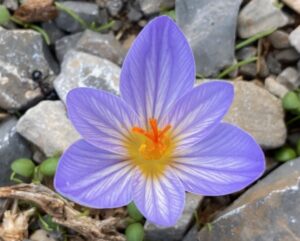
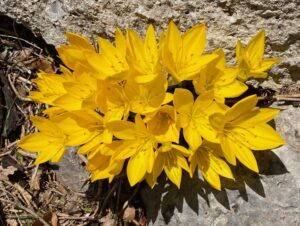

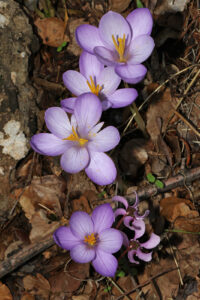
Day 1: Meet in Athens airport. We shall make our way to the Peloponnese over the Isthmus of Korinth, having the opportunity to enjoy the Korinthian Canal and reach our first overnight stop at Nafplio, one of the most beautiful towns of Peloponnese. We will spend a relaxing evening at one of the most romantic cities all over Greece.
Day 2: We visit the ancient site of Mycaene, capital of the first, oldest, civilization of mainland Europe, Mycaenean Civilization (1750-1050 BC). It is where king Agamemnon, the leader of the Troy expedition, ruled and where his tholos tomb, among nine others, still exists today.
Among the megalithic monuments we will see our first bulbs, Sternbergia and Scilla autumnalis. We then make our way to our next base, the picturesque town of Gythio, where we will spend the next 4 nights, stopping to look for plants on the way.
Day 3: From Gythio we go west to Oitylo, Areopoli and the amazing Limeni, in search of our first Crocus and Colchicum species. We will see the large white Crocus niveus and the pale lilac – purple Crocus goulimyi, Colchicum zahnii and the more rare Colchicum parlatoris and Colchicum sfikasianum, all endemics to this area. Biarum tenuifolium subsp. abbreviatum is another interesting endemic to this area, growing among Anemone coronaria, Arisarum vulgare and other autumnal plants. Crocus boryi, with goblet-shaped creamy-white flowers also grows here. The only autumn-flowering orchid, Spiranthes spiralis is also expected to be flowering.
The Rock Nuthatch inhabits the area and we shall make a stop to look for some. We will visit the spectacular Diros caves, part of an underground river where fossilized bones from panthers, hyenas, lions, deer and ferrets, and the largest deposit of hippo bones in Europe, have been found. We will have the opportunity to cross by boat 1,200m of this underground river, surrounded by impressive formations of stalagmites and stalactites.
Day 4: Mani peninsula is going to be visited today, with a surprisingly high concentration of rare and interesting plants, some of them only recently discovered. We shall go round the peninsula looking for rare geophytes, like Crocus boryi, Sternbergia lutea, Cyclamen graecum, Cyclamen hederifolium, several species of Colchicums and Crocuses and Narcissus serotinus. At least six autumn- or winter- flowering species of Crocus occur in the Mani, the majority of them endemic here. We shall walk the little picturesque fisherman village of Gerolimenas and then continue round the peninsula and wonder at the famous tower-houses which are going to dominate the landscape. Finally, we will reach the southernmost tip of mainland Europe, Cape Tainaro, where the sanctuary of Poseidon is located and the entrance to the Underworld exists, exploring and discovering rare Colchicum species here.
Day 5: Monemvasia. Today we drive through the southern slopes of Parnon Mountains, with a landscape of endless olive plantations, to the fortified town of Monemvasia. Founded in the sixth century, and thus one of the oldest continually-inhabited fortified towns in Europe. It is surrounded by rarities like the local endemic pale-pink Allium ritsii, Colchicum sfiakasianum and many other bulbs like Crocus niveus, C. boryi, C. laevigatus, C. cancellatus and C. hadriaticus. We will walk through this magnificent Greece’s Rock of Gibraltar.
Day 6: We make our way back north, to our next base at Mystras, the spectacular abandoned Byzantine city, once home to 40,000 people, now home to a small order of nuns. We shall look for Crocus boryi and Cyclamen graecum amongst the ruins. Depending on time we will also take a short walk into the Parori gorge. Overnight stay at Mystras.
Day 7: The Tayetos. A change of habitat today as we venture higher up into the Tayetos to look for Galanthus reginae-olgae and Cyclamen hederifolium in the Platanus orientalis forest. We will also see Juniperus drupacea, a small tree with great phytogeographical interest, as it is an Asiatic tree, with only a few populations in the Peloponnese. Hopefully there may be still some Colchicum bivonae, although this is towards the end of its flowering. We shall also see Allium callimischon, Acer sempervirens, Quercus coccifera and Quercus ilex and if we are lucky we might come across a salamander.
Day 8: Return trip to Athens
Will be added in due course


